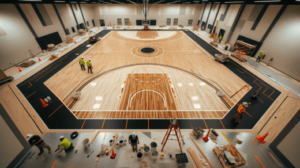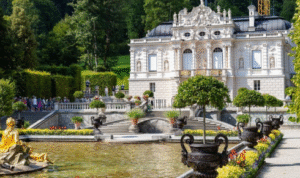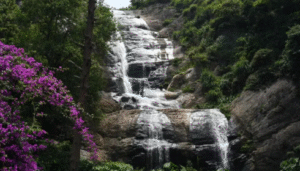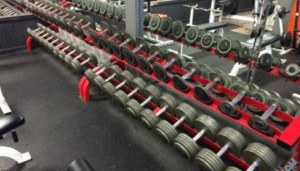How to Choose the Right Badminton Court Surface
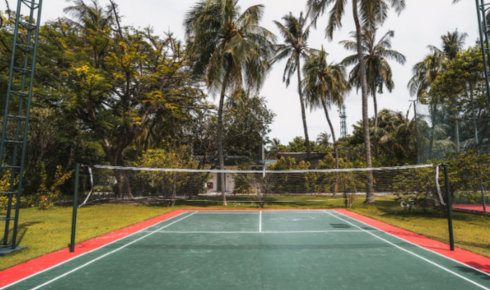
badminton court surface
Choosing the right badminton court surface isn’t just about appearance or budget—it’s about performance, safety, and durability. Whether you’re building a court for a school, sports academy, residential society, or public park, selecting the correct flooring is one of the most important decisions that will affect the playing experience, maintenance efforts, and long-term value.
In India, where climate conditions vary and usage patterns range from occasional recreational play to rigorous training sessions, the surface material must withstand weather, wear, and performance pressure. This blog offers a complete guide to help you select the best surface for badminton court projects, especially for outdoor installations using synthetic flooring for badminton court setups.
Understanding the Role of Badminton Court Flooring
The surface of a badminton court influences multiple aspects of the game—from footwork and player comfort to bounce behavior and grip. A court that’s too hard can cause injuries, while a slippery or uneven surface compromises player movement and confidence. It must offer a balance between firmness for stability and cushioning for joint protection.
In recent years, badminton court flooring in India has shifted from traditional concrete or wooden floors to modern synthetic surfaces that are engineered for outdoor performance and longevity. The growing preference for synthetic acrylic systems is driven by their adaptability, ease of maintenance, and superior playability.
Synthetic Flooring: The Preferred Choice for Outdoor Courts
Synthetic flooring has become the go-to option for outdoor badminton flooring. Unlike concrete or rubber, synthetic acrylic layers provide a smooth, weather-resistant, and non-slip surface that stays consistent over time. It’s especially well-suited for Indian conditions where courts must endure heat, rain, and dust.
Acrylic systems involve multiple layers applied over a prepared base (usually concrete or asphalt), starting with primer, followed by a resurfacer, cushion coats (optional), and finishing color coats with line markings. The result is a seamless, durable court that not only plays well but also looks professional.
Some of the key reasons to choose synthetic flooring include:
- Slip resistance: Ensures player safety even in slightly damp conditions
- UV resistance: Prevents color fading and surface damage due to sunlight
- Customizability: Offers color and cushioning options based on user needs
- Low maintenance: Requires only basic cleaning and occasional touch-ups
These properties make synthetic acrylic flooring the best surface for badminton court use, especially for outdoor installations where other materials fall short.
Factors to Consider While Choosing the Surface
Choosing the right flooring depends on understanding your specific use case and selecting a system that aligns with it. Here are a few key factors to guide your decision:
1. Location & Climate
If your court is located in an open area exposed to the sun and rain, a weatherproof surface is a must. Acrylic surfaces are UV-stable and do not absorb water, making them ideal for Indian cities that experience heavy monsoons or intense summer heat.
For indoor courts, PU or vinyl flooring may be considered, but they lack the weather resistance required for outdoor use.
2. Usage Frequency
How often the court will be used determines the required durability. For high-traffic courts in schools or training centers, go for an acrylic system with multiple cushion coats to absorb foot impact and reduce long-term wear.
On the other hand, for occasional residential or recreational use, a simpler 5-layer acrylic system might suffice—offering a balance between cost and performance.
3. Player Age and Skill Level
Courts that will be used by children or older adults benefit from cushioned flooring that absorbs impact and reduces injury risk. For professional-level play, a firm yet smooth surface is preferred for optimal footwork and precision.
Selecting the right texture and elasticity of the surface enhances user comfort and encourages regular play.
Benefits of Acrylic Flooring for Badminton Courts
When it comes to badminton court flooring in India, synthetic acrylic has consistently proven to be the most reliable option for outdoor projects. Let’s explore a few of its distinct benefits in greater detail.
Weather Durability
Acrylic floors are designed for all-weather usage. They don’t crack in the sun or become slippery in the rain. This allows institutions to keep their courts open all year round with minimal downtime.
Aesthetic Appeal
Unlike dull concrete or worn-out tile courts, acrylic coatings can be customized in vibrant shades that retain their brightness over time. This adds to the aesthetic value of the space, making the court visually appealing for visitors and players alike.
Minimal Upkeep
Acrylic courts are easy to clean and maintain. They don’t accumulate algae or dirt easily, and any surface wear can be addressed with resurfacing coats without rebuilding the entire court. This lowers long-term maintenance costs significantly.
Common Mistakes to Avoid
Even with high-quality materials, some courts fail due to improper planning or installation. Here are a few mistakes to avoid:
- Ignoring base preparation: A poorly leveled base leads to surface cracks and waterlogging
- Choosing the wrong texture: Extremely smooth finishes may become slippery when wet
- Not planning for drainage: Essential for outdoor courts to prevent standing water
- Using indoor materials outdoors: Vinyl or PU floors won’t last in direct sun or rain
Always consult experienced badminton court builders or flooring suppliers before starting your project to ensure compatibility with your site conditions.
Choosing the Right Supplier
Working with the right flooring material supplier is just as important as choosing the surface itself. Look for companies that offer:
- Weather-tested, certified acrylic systems
- Technical support for base preparation and installation
- Cushion and non-cushion system options
- Durable line marking paints and UV-resistant color coats
- After-sales assistance and product warranty
AQS is a trusted name offering specialized synthetic badminton court projects across India. Their acrylic materials are engineered for Indian weather, supported by nationwide availability and expert guidance.
Conclusion
Choosing the right badminton court surface requires careful evaluation of your environment, budget, and expected usage. In India, where courts must withstand both environmental challenges and heavy player traffic, synthetic acrylic flooring remains the most practical and durable choice.
Its anti-slip properties, visual appeal, and low maintenance needs make it suitable for schools, societies, clubs, and public sports facilities alike. With the right system in place, a well-constructed acrylic badminton court can last for years—offering safety, comfort, and consistent performance for every game.

